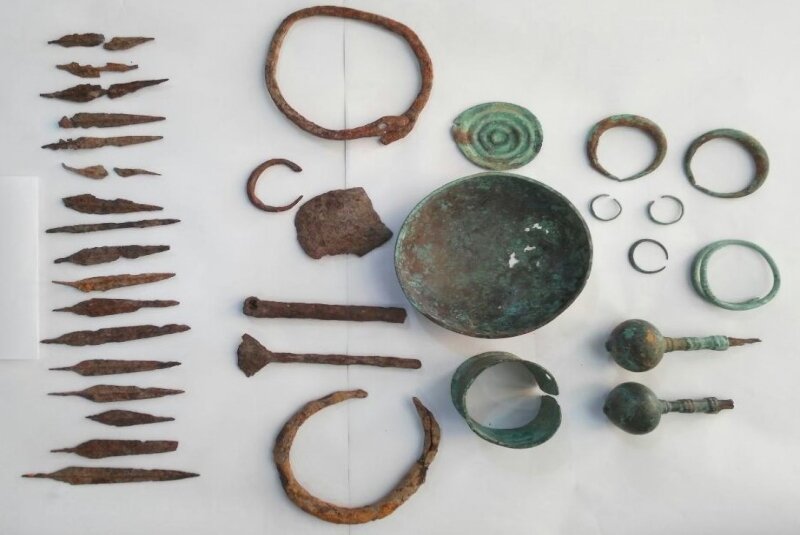27 prehistorical relics recovered in western Iran

TEHRAN – A collection of 27 prehistorical objects have recently been recovered in western Iran while farmers were plowing a piece of agricultural land, a senior police official in charge of protecting cultural heritage said on Tuesday.
The relics were found in Sarvabad county of Kordestan province where the locals rapidly informed the local directorate of cultural heritage, tourism, and handicrafts, Hassan Mehri said.
The objects include spearheads, metal rings, a bowl, and decorative pendants whose antiquity is estimated to date from the first millennium BC by experts of the directory, the official added, CHTN reported on Wednesday.
The first millennium BC witnessed the rise and fall of Medes and Achaemenid dynasties respectively. The Medes were an ancient Iranian people who spoke the Median language and who mostly inhabited an area known as Media between western and northern Iran. Around the 11th century BC, they occupied the mountainous region of northwestern Iran and the northeastern and eastern region of Mesopotamia located in the region of Hamadan (Ecbatana). Their emergence in Iran is believed to have occurred during the 8th century BC. In the 7th century BC, all of western Iran and some other territories were under Median rule, but their precise geographic extent remains unknown. Achaemenian Dynasty (559–330 BC) was the largest and most durable empire of its time. The empire stretched from Ethiopia, through Egypt, to Greece, to Anatolia (modern Turkey), Central Asia, and to India.
Kordestan is bounded by the Iranian region of Azarbaijan on the north, and it borders Iraq on the west. The name Kordestan means “Country of the Kurds,” referring to the region’s principal inhabitants. After the Turkish invasion of Iran in the 11th century CE (Seljuk period), the name Kordestan was applied to the region comprising the northwestern Zagros Mountains.
AFM
Leave a Comment